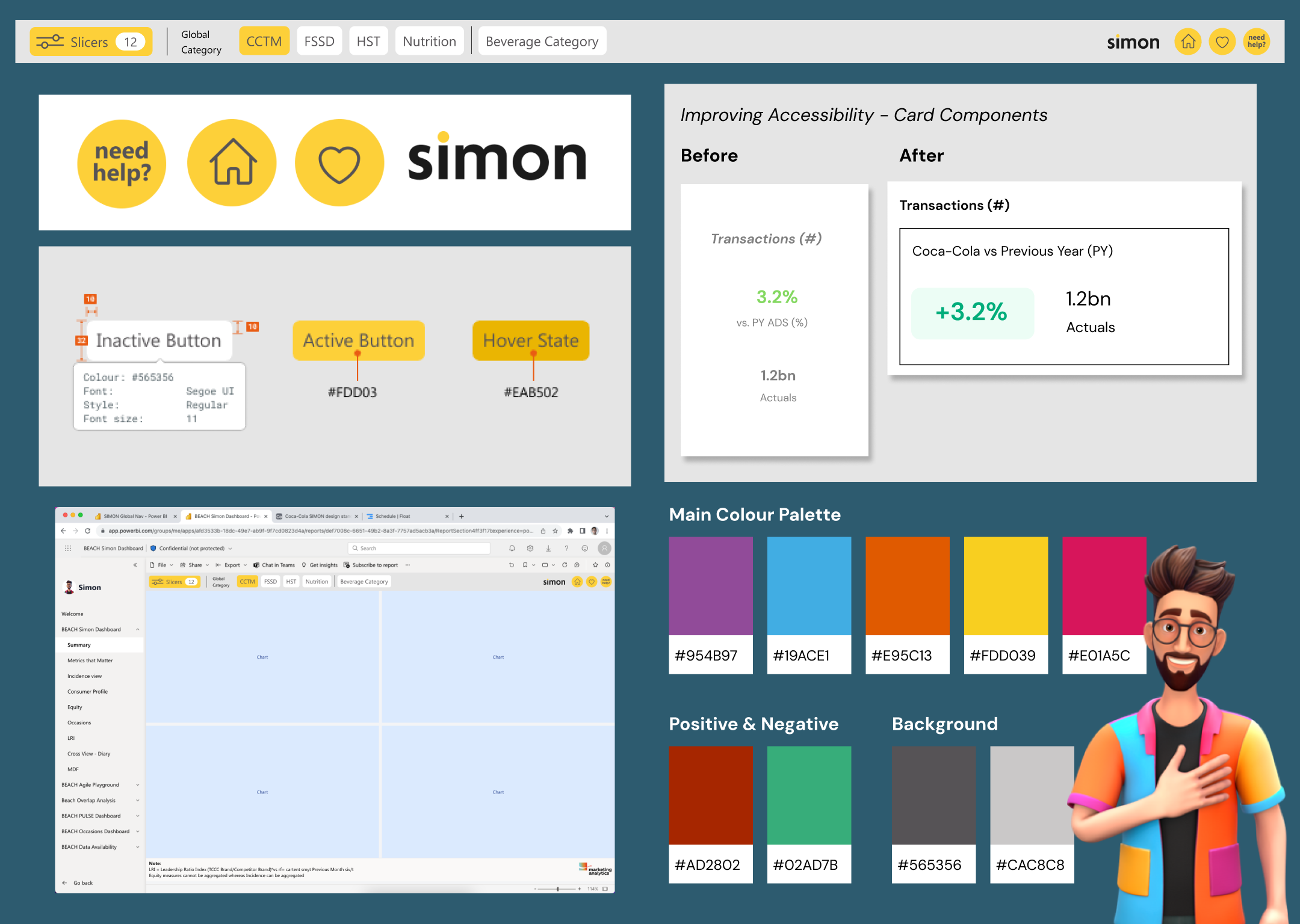Creating a Global Design System at Coca-Cola
COMPANY: Coca-Cola ROLE: Strategic Lead, UX Researcher & Design Contributor MY TEAM: UX Researchers, UX Designers, BI Developer
Making global business reporting intuitive, engaging and scalable.
The Challenge
After launching Coca-Cola’s global knowledge and insights platform ‘SIMON,’ a surge of diverse content led to inconsistent report design, duplication of effort, and barriers to data literacy across global teams. Coca-Cola needed a scalable, easy-to-use design system to improve user experience, reduce development overhead and reinforce the SIMON brand as the trusted home of insights.
My Role
I led the strategic development and global rollout of the design system - from initial vision to system architecture, brand alignment, and implementation support. My responsibilities included:
Defining the vision and purpose of the system aligned with business and user goals
Developing the component structure with a focus on accessibility and data clarity
Co-creating templates with UX designers and BI developers to ensure technical feasibility
Establishing governance and documentation to support long-term scalability
Driving adoption across teams through enablement, onboarding, and stakeholder management
Working with the Lead Developer and UX Designer, I shaped the system's structure and standards, created early prototypes, and worked closely with technical teams to translate user needs into scalable components.
Research & Validation
To ensure the system was rooted in real user needs, I oversaw a UX research programme in collaboration with our design team. This included:
Heuristic evaluations of existing reports
Stakeholder interviews across markets and functions
Usability testing of early prototypes
I also personally facilitated several user interviews and usability tests, giving me first-hand insight into the challenges people faced when navigating business reports. These insights were critical in shaping decisions around layout, navigation, and visual hierarchy.
I facilitated interviews across 9 different markets and with a variety of participants from across the Coca-Cola business.
Outputs from the usability test noting user questions, comments and pain points. [Blurred for confidentiality].
The Solution
We created a modular design system and reporting template that could be rolled out globally, featuring:
A reusable, branded report template
A component library for data visualisation (e.g., charts, filters, cards)
Standardised layout and interaction patterns
Comprehensive governance and documentation for global teams
Standardised components, colour palettes, page layouts and accessibility improvements that featured within the SIMON design system.
Developer Documentation: Example of 2 sections of the Power BI template, with components built in for immediate use and instructions on design standards, including font sizing, page layout/structure and button states.
Before & After
Before and After: Example of a report that was updated using the design system [data blurred for confidentiality].
The Impact
01
Improved data literacy, with users reporting greater clarity and ease of use
02
Stronger brand recognition for SIMON as a trusted insights platform
03
Faster report development, saving time and reducing duplication
04
A foundation for scalable future enhancements to the reporting experience
In a survey following the roll out and implementation of the design system, 79% of SIMON users agreed "SIMON helps me to understand business performance", a +14% increase vs. the previous year.
The standardised design resulted in an increase in recognition and trust for the SIMON brand across the organisation, with users increasing by 45% vs. previous year to almost 5000 (H1 2024).
Lessons Learnt
This project reinforced the power of combining strategic leadership with close collaboration. Key takeaways included:
How to scale a design system across diverse global teams
The importance of embedding UX research - even in internal tools
The value of co-creating with developers and designers early and often
How to drive adoption not just through governance, but through advocacy, training, and empathy









